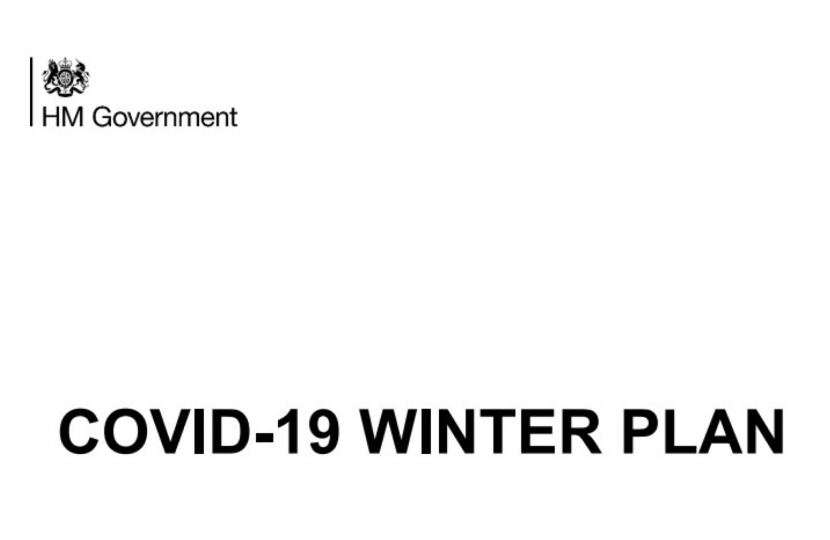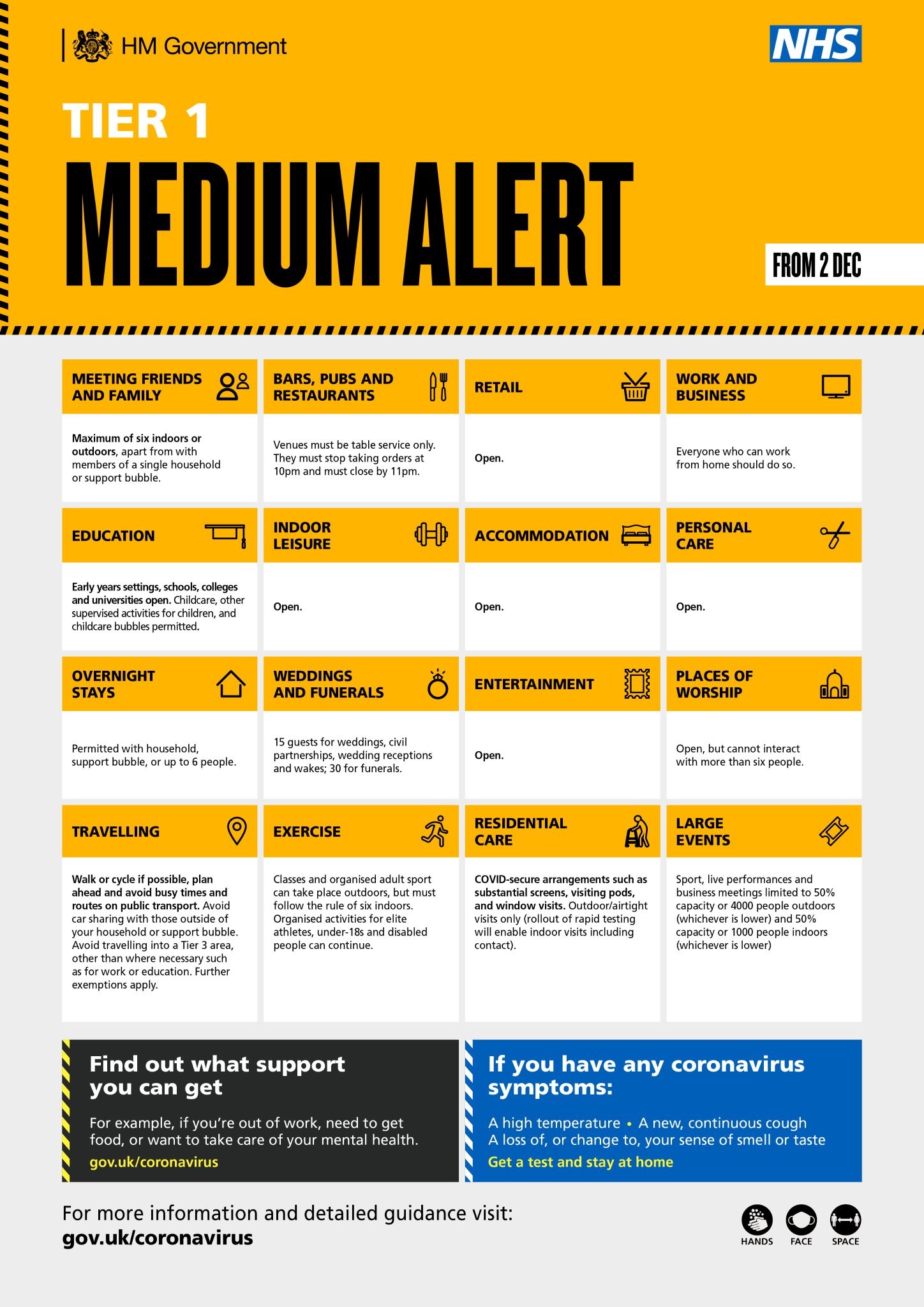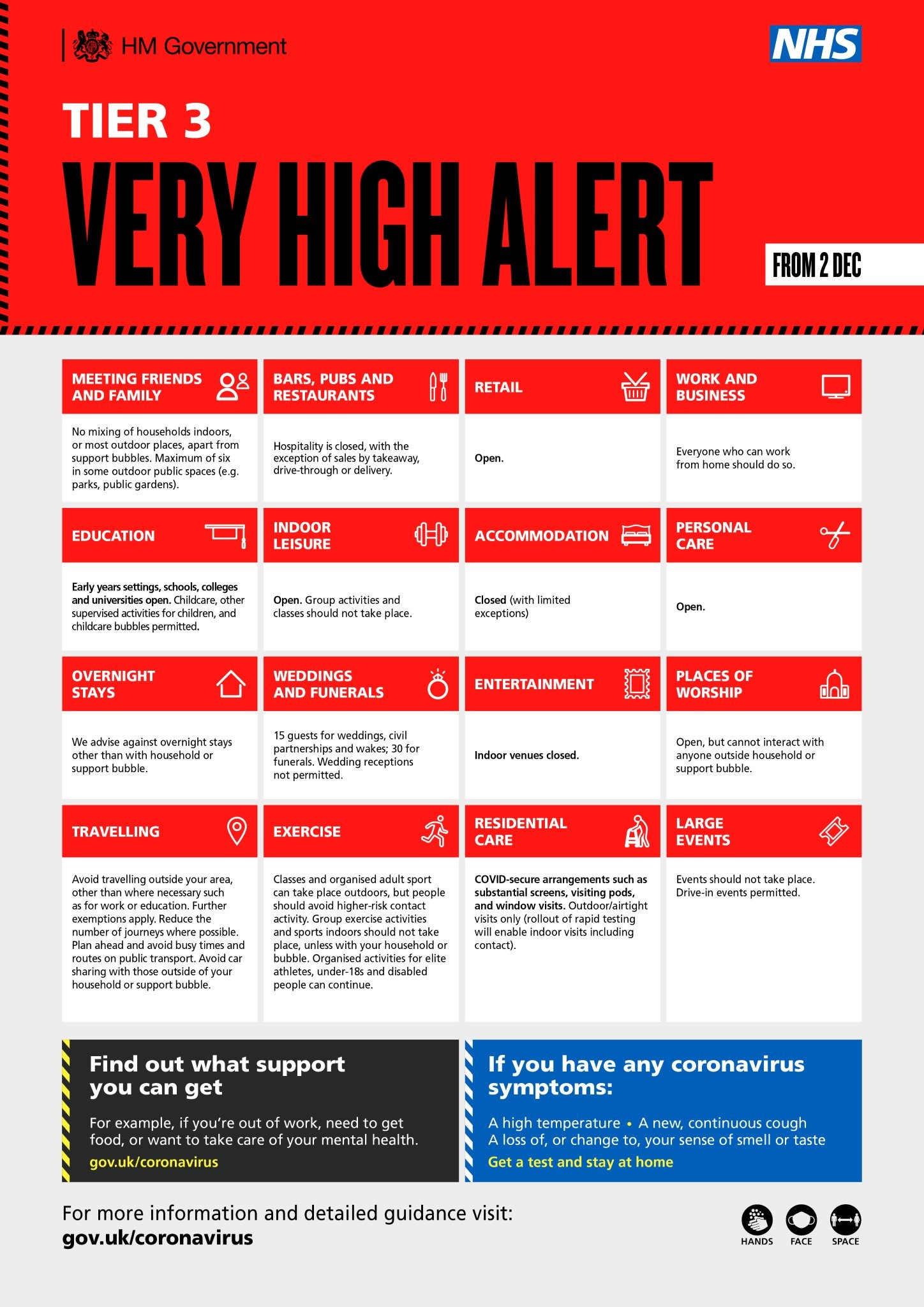
The second coronavirus peak that we have seen around the world shows us all that we are going to be dealing with the coronavirus for the long-term.
That is why, during this period of national restrictions, we have been working on a long-term, balanced approach which protects the NHS, keeps children in school and lets the economy get moving again. At the heart of that long-term and balanced approach is a return to the regional tier system. Adherence to these tiers is how we avoid another national lockdown.
We want to get things moving again. That’s because we understand that national lockdowns are not cost-free. Not only do they have an enormous cost in terms of jobs and small businesses, they have a profound impact on peoples’ mental health and loneliness.
Only by keeping the virus under control through December, even when national restrictions fall away, can we be able to see friends and family over Christmas in a relatively safe way. As mass testing and vaccines are rolled out through winter and into the spring, the need for even localised restrictions will gradually reduce – and life can begin to return closer to normality.
Returning to the localised approach:
- Ending the national restrictions on 2 December – true to our word. Thanks to the progress we’ve made on vaccines and mass testing, the stay at home order will end, collective worship can resume, and people will no longer be limited to seeing one other person in outdoor public spaces.
- Re-introducing the localised approach after 2 December, in order to keep the virus under control. The virus is still present, and that means we need to keep some level of restrictions on a local level. If these are not in place then it could get out of control again before vaccines and mass testing have an impact. That would put at risk all our work to date. Our principle remains it’s right to target the toughest measures in the areas where the virus is most prevalent.
- Making changes to the previous tiered system:
- The 10pm closing time for hospitality has been modified to last orders at 10pm and closing time at 11pm. This allows customers to depart in a staggered way and provides greater flexibility.
- Across all tiers, non-essential retail will be able to remain open and operate in a Covid-Secure way.
- Gyms will be allowed to remain open.
- Spectator sport can resume with capacity limits and social distancing, providing more consistency with indoor performances in theatres and concert halls.
- Strengthening the tiers in order to keep the virus under control. The scientific advice is also clear that, while the previous tiers reduced the R rate, they were not quite enough to bring R below 1. The tiers therefore need to be toughened in some ways to keep the virus under control:
- In tier 1, we will encourage people to minimise travel and reinforce the importance of working from home where possible.
- In tier 2, alcohol may only be served in hospitality settings as part of a substantial meal.
- In tier 3, hospitality will close except for delivery and takeaway, and indoor entertainment venues must also close.
- Publishing clear indicators to determine which tier an area enters into, and how areas can move between tiers thereafter. These tiers are designed to keep the R below 1 and therefore allow areas to move down the tiers, rather than simply escalate as the epidemic grows. We are publishing clear indicators which will determine the tier each area will go into on 2 December and how areas move between tiers thereafter.
- Prioritising tier 3 areas for mass testing. We know how frustrating it has been for people living in areas which have had some form of restrictions since the summer, and will therefore prioritise tier 3 areas for the rollout of mass testing. Up to 13 million people will be offered two tests each before Christmas.
How the Regional Tiered System will look when the National Restrictions end on 2 December:
Medium Alert

High Alert

Very High Alert

How the Government has used the national lockdown to put us in the best possible position:
- Preparing to rollout vaccinations as soon as they are found to be safe and effective. Next month, the vaccination programme will begin. We have secured access to 355 million vaccine doses, and the NHS is gearing up to lead a national vaccination programme.
- Making progress on mass testing, to help reduce the need for restrictions as a vaccine is rolled out. We now have capacity for 500,000 tests a day, and recently announced the creation of new two mega-labs, that will add a further 600,000 tests a day to the UK’s capacity when they are operation. We will roll out mass testing to 13 million people before Christmas, allowing us to identify and isolate people who don’t have symptoms but are unwittingly spreading the virus.
Prime Minister's statement on coronavirus (COVID-19): 23 November 2020
"It seems that almost every week we learn of some new scientific breakthrough to help us beat Covid, last week it was good news about the vaccine from Pfizer BioNTech and then Moderna. This morning we heard the fantastic news that the Oxford Astra Zeneca vaccine has been highly effective in clinical trials, there are more tests to be done, but the signs are that this vaccine - financed partly by British taxpayers, working in partnership with a great British company – this vaccine could be both affordable and easy to use and highly effective. We have ordered 100m doses and thanks to the work of the Vaccines Task Force we have secured more than 350m doses of potential vaccines of all kinds, but we are not out of the woods yet. We can hear the drumming hooves of the cavalry coming over the brow of the hill, but they are not here yet.
Even if all three vaccines are approved, even if the production timetables are met and vaccines notoriously fall behind in their production timetables, it will be months before we can be sure that we have inoculated everyone that needs a vaccine and those months will be hard, they will be cold, they include January and February when the NHS is under its greatest pressure and that is why when we come out of lockdown next week we must not just throw away the gains we have all made.
So today we have published out Covid Winter Plan which sets out a clear strategy to take the country through to the end of March. We will continue to bear down hard on this virus. We will use tough tiering - in some ways tougher than the pre-lockdown measures and details of those tiers are on the gov.uk website later this week when we have the most up to data and we will be sharing details of which tier your area is going to be in. I should warn you now that many more places will be in higher tiers than alas was previously the case and we will simultaneously be using the new and exciting possibilities of community testing - as they have done in Liverpool and there will be a clear incentive for everyone in areas where the virus prevalence is high to get a test, to get one of these rapid turnaround lateral flow tests and do your best for the community. Get a test to help to squeeze the disease and reduce the restrictions that your town or city or area has endured and that way - through tough tiering and mass community testing, we hope to let people see a little more of their family and friends over Christmas.
Now I know that many of us want and need Christmas with our families, we feel after this year we deserve it, but this is not the moment to let the virus rip for the sake of Christmas parties. Tis the season to be jolly but tis also the season to be jolly careful, especially with elderly relatives, and working with the Devolved Administrations we will set out shortly how we want to get the balance right for Christmas and we will be setting this out later this week. Christmas this year will be different and we want to remain prudent through Christmas and beyond into the new year, but we will use the three tools that I have described to squeeze the virus in the weeks and months ahead - tiering, testing and the roll-out of vaccines, employing all three techniques together so as to drive down R and drive down the infection rate and I really am now assured things really will look and feel very different indeed after Easter, and that idea of an end goal or date is important because at last - if the promise of the vaccines is fulfilled - we do have something to work for a timescale, a goal around which businesses can begin tentatively to plan and with luck and with hard work we will be seeing improvements before then, but for now the problem is not a shortage of hope or a lack of optimism, not with the amazing news that we are getting from the laboratories in this country. The challenge now as we face this difficult winter ahead is to fight down any over-optimism, to master any tendency to premature celebration of success, that success will come all the faster if we work together to follow the guidance, maintain the basic disciplines as people have done so heroically over the last few months.
Hands, face, space and get a test if you have symptoms because that is the way we will beat it together."
To view the Government’s COVID-19 Winter Plan in full, please visit: https://www.gov.uk/government/publications/covid-19-winter-plan.
To view the PM’s statement on the COVID-19 Winter Plan to the Commons, please visit: https://www.gov.uk/government/speeches/pm-statement-on-covid-19-winter-plan-23-november-2020.
